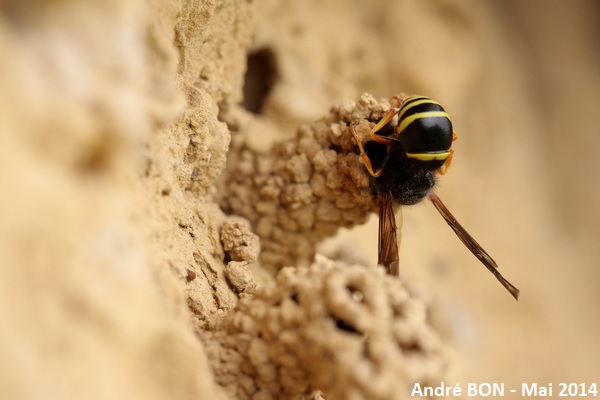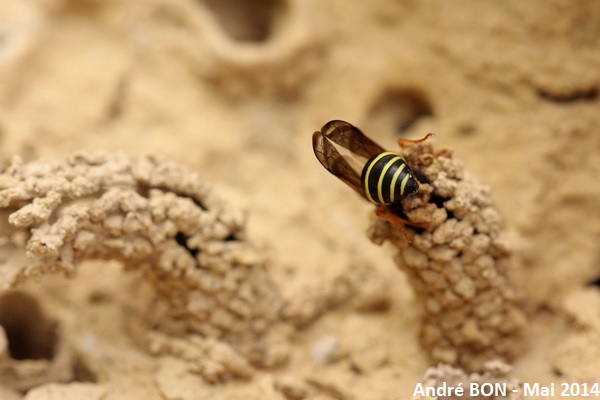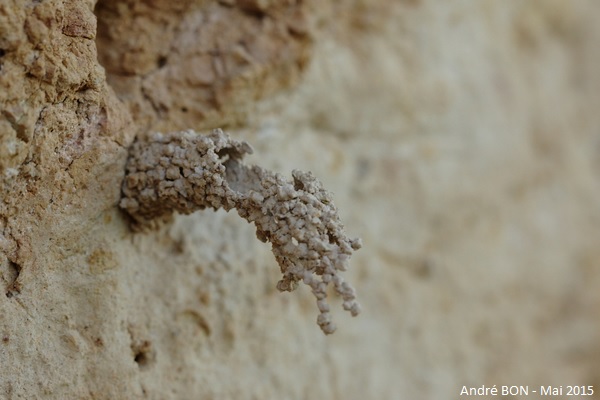




| Odynerus sp. (Latreille, 1802) |





|
|
Scientific name: Odynerus sp. (Latreille, 1802) Common name: French name: Order: Hymenoptera Family: Vespidae Wingspan : Biotope: The nests are located on sandy slopes or cliffs, on earth walls or into dry stems of Reed, Bramble or other plants. Geographic area: Worldwide but mainly in the Holarctic region, many species. Observation period : May to September in France. |
Among potter wasps of the Eumeninae subfamily, bearing two spines at the apex of median tibias, Odynerus species are part of the group with a non-petiolate abdomen. The Odynerus genus is characterized by the lack of a transverse carina on the fore edge of tergite 1 and the lack of a well marked longitudinal groove on the same tergite. The hind edge of the tegulae is rounded. There is no carina on the lateral edges of the propodeum. There are two deep emarginations on the underside of femurs II. all these criteria are difficult to see on pictures shot in the field. The French species are generally black coloured with yellow or white cross markings on the abdomen. The species of the Allogymnomerus and Odynerus subgenera show a completely black post-scutellum, those of the Spinicoxa subgenus bear yellow markings on the post-scutellum. |
| [To know more about the Odynerus sp.] [Next picture] [Top] |

|
The earth walls of this old farm are used every year as a nesting location for these potter wasps. A first research based on the nest shape, with a downcurved chimney, and on the overall look of the wasp led me to the Spiny Mason Wasp species (Odynerus spinipes). However a deeper research made me less sure about the species identification based on the complexity of the criteria to evaluate and on the important number of possible confusions. |
| [To know more about the Odynerus sp.] [Next picture] [Previous picture] [Top] |

|
This view clearly shows a completely black post-scutellum, this discards the Spinicoxa subgenus. |
| [To know more about the Odynerus sp.] [Next picture] [Previous picture] [Top] |

|
My series of photos does not include a good view of the underside of femurs II. |
| [To know more about the Odynerus sp.] [Next picture] [Previous picture] [Top] |

|
Here is one curved chimney protruding in front of the nest and having certainly reached its maximum length. It seems damaged or not finished at mid-length. |
| [To know more about the Odynerus sp.] [Previous picture] [Top] |

|
Looking thru the hole at mid-length of the chimney you can guess one caterpillar brought by the potter wasp. I have read that most of their preys are caterpillars. |